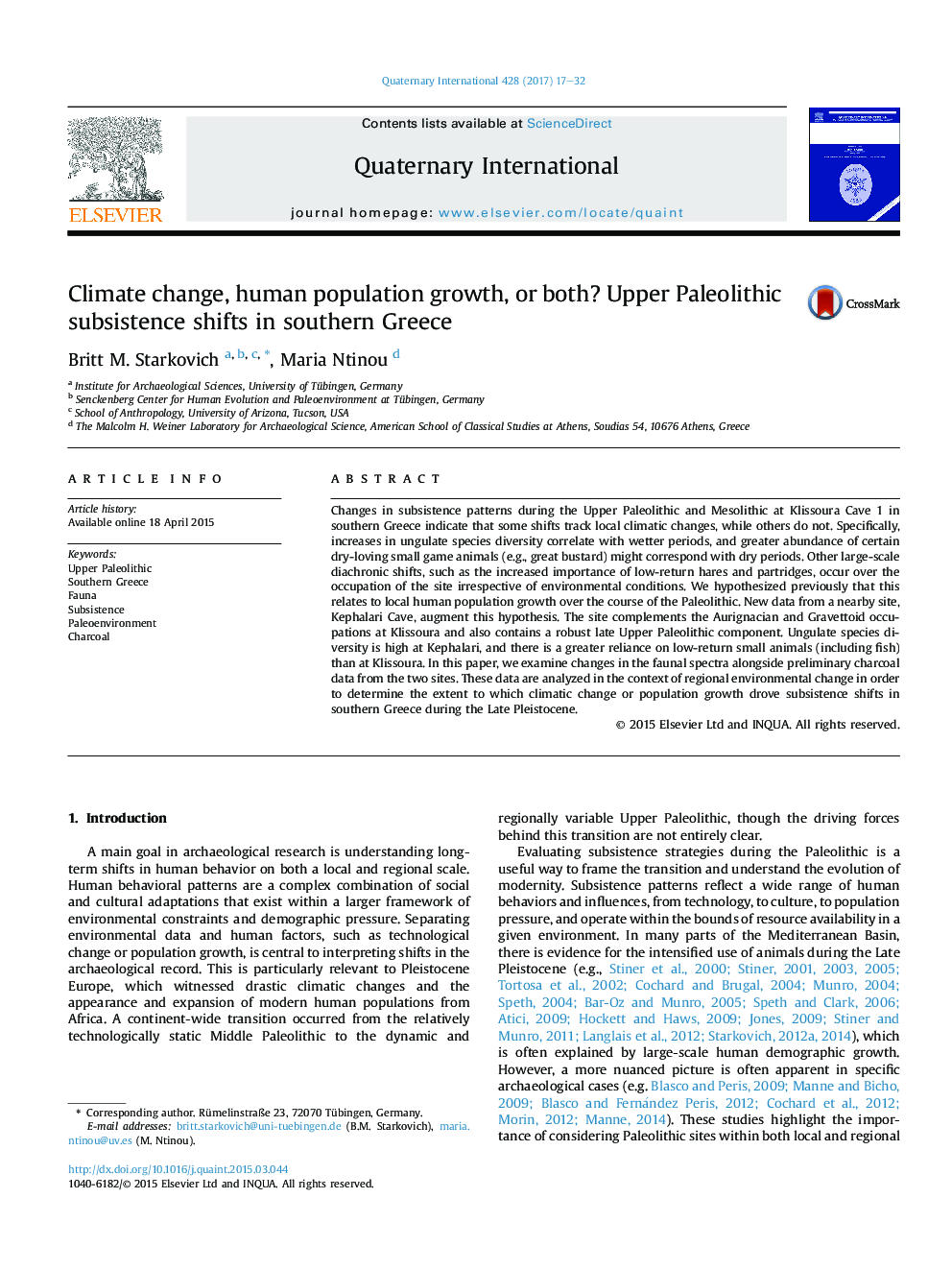| کد مقاله | کد نشریه | سال انتشار | مقاله انگلیسی | نسخه تمام متن |
|---|---|---|---|---|
| 5113526 | 1377937 | 2017 | 16 صفحه PDF | دانلود رایگان |
Changes in subsistence patterns during the Upper Paleolithic and Mesolithic at Klissoura Cave 1 in southern Greece indicate that some shifts track local climatic changes, while others do not. Specifically, increases in ungulate species diversity correlate with wetter periods, and greater abundance of certain dry-loving small game animals (e.g., great bustard) might correspond with dry periods. Other large-scale diachronic shifts, such as the increased importance of low-return hares and partridges, occur over the occupation of the site irrespective of environmental conditions. We hypothesized previously that this relates to local human population growth over the course of the Paleolithic. New data from a nearby site, Kephalari Cave, augment this hypothesis. The site complements the Aurignacian and Gravettoid occupations at Klissoura and also contains a robust late Upper Paleolithic component. Ungulate species diversity is high at Kephalari, and there is a greater reliance on low-return small animals (including fish) than at Klissoura. In this paper, we examine changes in the faunal spectra alongside preliminary charcoal data from the two sites. These data are analyzed in the context of regional environmental change in order to determine the extent to which climatic change or population growth drove subsistence shifts in southern Greece during the Late Pleistocene.
Journal: Quaternary International - Volume 428, Part B, 15 January 2017, Pages 17-32
